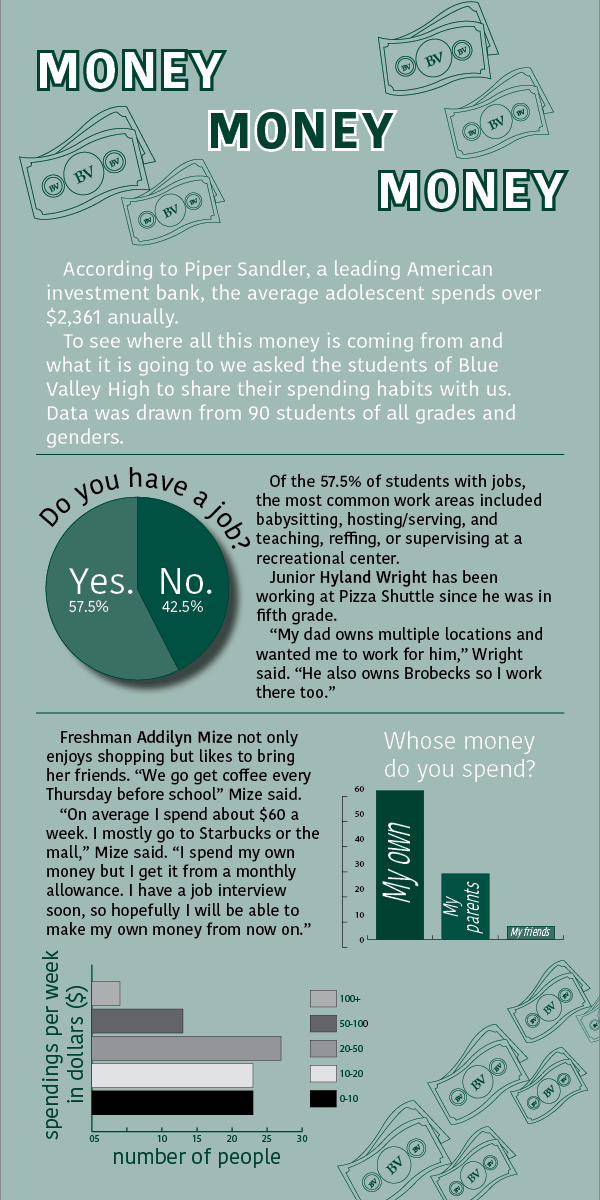Where’s it From?
Tigers share pros and cons of consumerism on social media
Open any video and you will see multiple comments along the lines of “where’s your top from?”. It can be a clip completely unrelated to fashion, but the questions are always there. Trends no longer come back every twenty years because of the rise of microtrends. Currently, trend lifecycles last no longer than a few months. Students at Blue Valley have noticed the consumerism craze on multiple social media platforms.
“There are a lot of them on Instagram,” Senior Kallie Keiter said. “It would be a random video and people were like ‘That’s so cute— where’d you get it?’.”
Keiter believes teens especially should refrain from buying trends because many are spending their parents’ money.
“You shouldn’t buy everything you see on the internet.” She said.
However, Sophomore Jude Roos regards that inquiries about where to find something can be helpful for anyone genuinely interested in doing something new.
“If people find something really cool in a video, then sure they can ask about it,” Roos said. “It can bring people joy, but it can also benefit off people in an unfair way.” In fact, out of 90 surveyed, 60% of Blue Valley Tigers have bought something because they saw someone else at school with it.
Senior Bella Collins tries not to follow trends, though she does find comments about where pieces are from useful.
“I think it’s fine if you actually like it but buying things just to have them because someone else does can get to be too much.”
Despite finding these comments helpful, Collins also believes they’re excessive.
“Too many people try to follow trends and what everyone else does.” she said.
Keiter feels similarly about chasing what’s in style.
“Be content with what you have,” She said. “We shouldn’t be spending our money on things we already have.”

Upperclassmen Against Trends
Junior discusses older students’ reluctance to hopping on bandwagons
Trends are known to cycle through with the decades. 90s baggy jeans and bucket hats saw a massive resurgence in the early 2020s but how do trends cycle on a smaller scale? Trends that appeal to different grades often are very different, as a 14 year old and an 18 year old won’t wear the same things, or be into the same music.

However, how similar are these trends?
One of the differences between the grades and their trends are how dated their preferences are. Upperclassmen often have more of an aversion to newer trends for longer. When something like the Stanley water bottle becomes popular, for a few weeks you will only see underclassmen using it until upperclassmen hops on the trend.
This isn’t simply because the older students don’t know about it. The cycle of trends are delayed between grades by a few weeks because upperclassmen are more reluctant to trends.
Upperclassmen being resistant to trends is partially due to the platforms they are on. While there is only a difference of one or two years, freshmen and sophomores’ social media forms generally consist of Snapchat and TikTok. While there is some overlap, upperclassmen are more on instagram, differing the trends in clothing, items, and music they see and therefore follow.






